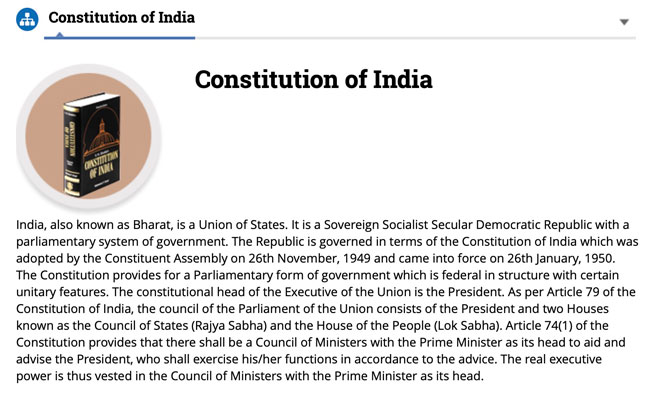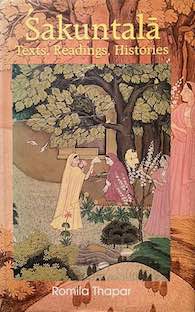In the epic version, the identity of Sakuntala as an apsara is reiterated by the small details which make her different from an ordinary woman.
Yet she is in the mould of the other epic heroines – Draupadi, Kunti, Gandhari – strong women who as mothers and wives dominate the story and whose individuality cannot be overlooked. Epic heroines are sometimes associated with the knowledge of a treasure which the hero seeks, or else they protect the treasure. In the narrative of Sakuntala the treasure may be symbolised by the son she brings to the hero, a son who was to be unique in the lineage of the Purus. The eulogies on Bharata in the later tradition, exalting him as the ancestor of a famous clan (even though his children died and he was succeeded by an adopted son); marking him out as a major figure in the lineage not only requires introduction through an unusual birth – namely, a three-year gestation with a mother who could be either an apsara or a forest dwelling woman – it also ensures that the story of Sakuntala remains in the consciousness of those who live in the land of Bharata.
Source: Romila Thapar in “The Narrative from the Mahabharata”, Sakuntala: Texts, Readings, Histories (New Delhi 1999), pp. 41-42
[Bold typeface added above for emphasis]
“Tribal men and women mix freely, but with respect for each other [but] caste Hindu society in India is so convinced of its own superiority that it never stops to consider the nature of social organisation among tribal people. In fact it is one of the signs of the ‘educated’ barbarian of today that he cannot appreciate the qualities of people in any way different from himself – in looks or clothes, customs or rituals.” – Guest Column in India Today >>
“Tribal population was spread all over India and most of them occupied wild tracts, hilly and forested areas, away from more civilized centers. In 1880 their population was estimated at about seventy million. They had existed for centuries with their own social traditions and beliefs and subsisted on natural resources. They had preserved their near isolation and way of life until the British administration and policies made inroads into their territories.” – Subha Johari in Tribal Dissatisfaction Under Colonial Economy of 19th Century >>
“If women are empowered, there is more development in society” – Droupadi Murmu
Find this and other speeches by the 15th President of India >>
Tip: learn more about the ways the story of Bharata is being debated and reinterpreted today (i.e. as ancestor of modern Indians in the context of the impending change of the nation’s official name from “India” to “Bharat”).
Type “replacing India with Bharat” or similar keywords
Up-to-date reports by Indian journalists and commentators
To search Indian periodicals, magazines, web portals and other sources safely, click here. To find an Indian PhD thesis on a particular tribal community, region and related issues, click here >>
Search tips
Combine the name of any particular state, language or region with that of any tribal (Adivasi) community.
Add keywords of special interest (music, poetry, dance just as health, sacred grove and biodiversity); learn about the rights of Scheduled Tribes such as the “Forest Rights Act” (FRA); and the United Nations “Declaration on the Rights of Indigenous Peoples”, “Universal Declaration of Human Rights”, “women’s rights”, or “children’s right to education”.
Specify any other issue or news item you want to learn more about (biodiversity, bonded labour and human trafficking, climate change, ecology, economic development, ethnobotany, ethnomedicine, global warming, hunter-gatherers in a particular region or state, prevention of rural poverty, water access).
For official figures include “scheduled tribe ST” along with a union state or region: e.g. “Chhattisgarh ST community”, “Himalayan tribe”, “Scheduled tribe Tamil Nadu census”, “ST Kerala census”, “Particularly Vulnerable Tribal Group Jharkhand”, “PVTG Rajasthan”, “Adivasi ST Kerala”, “Adibasi ST West Bengal” etc.
In case the Google Custom Search window is not displayed here try the following: (1) toggle between “Reader” and regular viewing; (2) in your browser’s Security settings select “Enable JavaScript” | More tips >>
Note: hyperlinks and quotes are meant for fact-checking and information purposes only | Disclaimer >>

“India, also known as Bharat, is a Union of States. It is a Sovereign Socialist Secular Democratic Republic with a parliamentary system of government.” – Constitution of India
Source: National Portal of India
Learn more about the Indian Constitution and decisions by India’s Supreme Court >>
